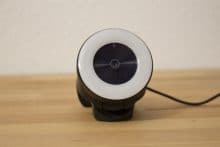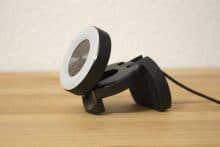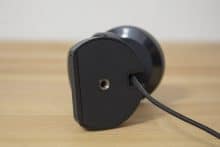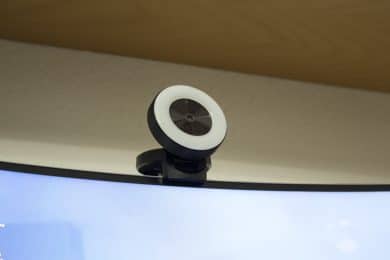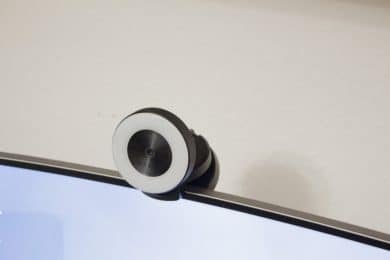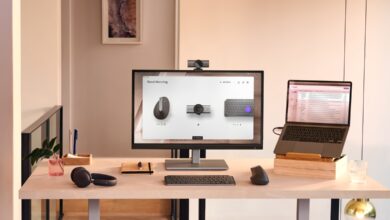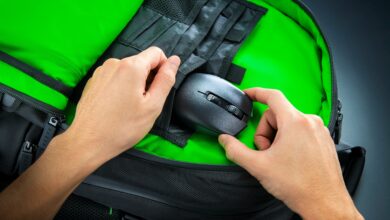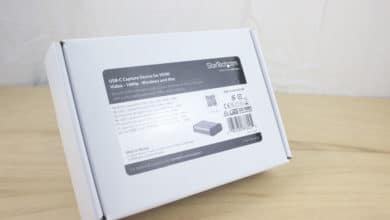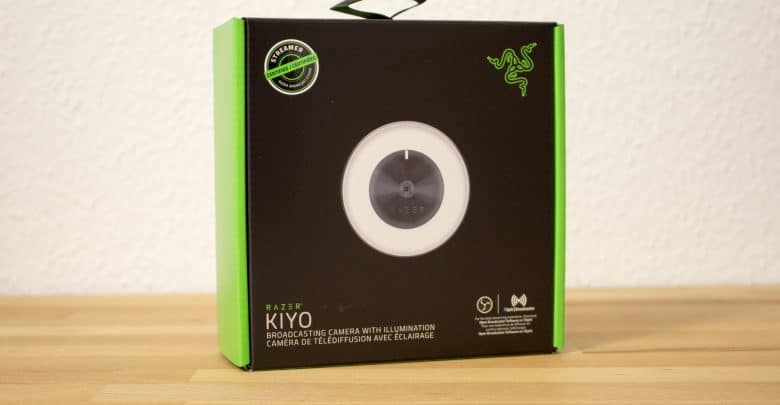
The webcam Kiyo from Razer, together with the microphone Seiren X, is intended to provide a cost-effective entry into the world of streaming. The device is available for a price of around 110 euros and aims to be uncomplicated and easy to operate without prior knowledge, without sacrificing quality.
The following test report will clarify the extent to which Kiyo meets the needs of beginners and professionals. For this the webcam is evaluated regarding its workmanship, equipment, picture quality and setting possibilities.
Workmanship, Design, Materials
As expected, the webcam is inconspicuous. The materials used are typical for the price range of the webcam. The workmanship appears impeccable. The small camera can be mounted easily due to the bracket. Already at first glance, the lighting ring is noticeable, which will be examined more closely in the further course of the test.
The design of the Kiyo is typical for a webcam, but is dominated by the light ring. The webcam is connected via USB cable. Overall, there are no points of criticism in the area of workmanship and appearance.
Equipment
As already mentioned, the Kiyo is dominated by the ring of light that surrounds it. This lighting unit is intended to achieve optimum illumination of the face, which is helpful in many shooting situations. The illumination of one’s own face is probably best known to laypeople from photographers. Here, too, the face is illuminated with a quite bright light in order to be able to illuminate it as ideally as possible for an image recording. The light ring of the webcam works in principle exactly like the lights of a professional photographer.
In practical use, the circular lighting unit actually proves to be very useful. When the light is switched off, the face appears very dark in the shot – this could presumably lead to discomfort for any spectators and is not particularly serious. If the light ring is switched on, however, the face shines in a new shine – the lighting is indeed excellent. The quality of the video is enormously increased by the illumination of the face.
Software is not included with the webcam, which is an obvious weakness. The adjustment possibilities of the device are thus greatly limited, which also has an effect on the image quality – more on this later. Windows users can access OBS and change at least the most basic settings manually. However, the possibilities were also very limited here. All in all, the camera’s spartan equipment serves above all to make it user-friendly for laypersons. Beginners can start directly with the Kiyo and do not have to deal with technical fine-tuning and various camera settings first. For more experienced streamers, however, the absence of these possibilities is a clear disadvantage.
Image Quality
From the previous section it can already be seen that the representation of the face with the light ring switched off is at best mediocre. Apart from that, the Kiyo offers a surprisingly good picture quality, which can be further increased by switching on the light ring.
At 30 frames per second, recording takes place at a resolution of 1,920 x 1,080 pixels, while 60 frames per second takes place at 1,280 x 720 pixels. With regard to the values, the webcam can be compared to much more expensive devices, which at first seems surprising. Overall, however, the picture quality cannot compete with that of top models.
This is mainly due to the missing setting options of the webcam. Exposure and focus are automatically adjusted. The recording person has hardly any possibility to influence the recording. On the one hand, this offers the advantage that laypersons can operate the camera without technical knowledge or experience. On the other hand, there is the disadvantage that a bad image cannot be corrected manually, which will annoy experienced users in particular.
Even users of the simplest mobile phone cameras sometimes have to correct the autofocus of the camera in order to take a nice picture. Now the Kiyo denies this possibility to its users. In most cases the autofocus works quite well and produces a decent image. Sometimes, however, a satisfactory reception is simply not possible due to the lack of an opportunity to exert influence. The self-regulation of the camera is both a curse and a blessing. While it makes recording easier in good conditions, it makes it completely impossible in more difficult environments. Professionals who have already gained experience with various cameras will probably never be satisfied with the Kiyo. Beginners, on the other hand, will find an easy-care camera that does not require any know-how and yet usually produces an acceptable result. As mentioned in the previous section, Windows users can use the OBS software to influence at least some basic settings.
However, this criticism of the self-regulation of the camera should ultimately be neither destructive nor one-sided. It should be positively emphasized that the use for laymen is facilitated. In addition, it should be mentioned that the image quality – if the recording environment is acceptable for the self-adjusting camera – is extremely positive.
Result of the Razer Kiyo Review
The price of 110 Euros is absolutely reasonable for the performance of the camera. It is mid-range in price and offers solid but not outstanding performance. Price and performance fit very well together. Of course, the device cannot compete with high-priced luxury models. However, this cannot be demanded from a camera costing 110 euros. Overall, the device is convincing, offers a very good extra with the light ring, but weakens slightly due to the self-regulation.
Razer Kiyo
Workmanship
Features
Image Quality
Adjustment Options
Value for Money
A good streaming webcam for beginners.
